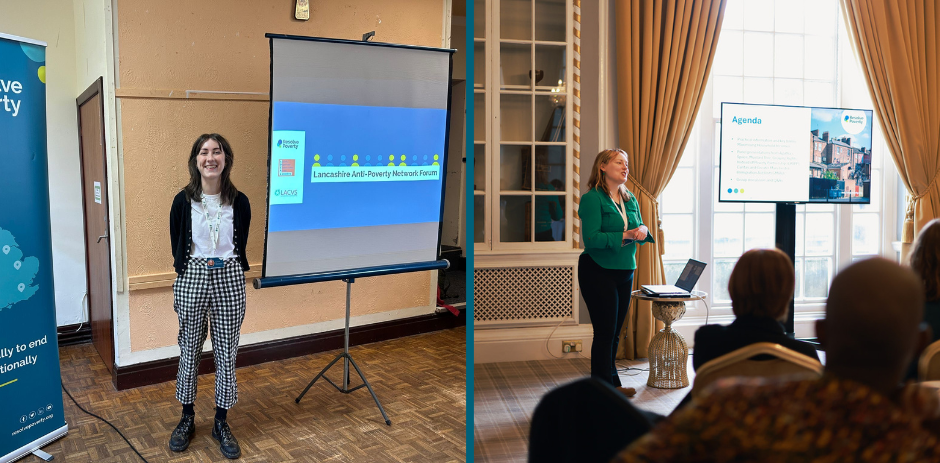By Sophie Pilendiram, Intern at the Centre for Young Lives
Covid changed many childhoods and the cost of living crisis has only deepened the crisis facing some families. The Centre for Young Lives’ recent annual State of the Nation report offers a stark snapshot into the scale of vulnerabilities millions of children in England are facing.
While most children in England are doing well, millions of children in England are growing up facing challenges like poverty, mental health issues, problems at school, or inadequate support for Special Educational Needs and Disabilities. These issues rarely exist in isolation — instead they overlap, making it harder for many children to access the help they need. Worse still, many of these vulnerabilities go unrecognised, leaving some children unseen by the systems that should be there to support them.
Child poverty continues to rise. Since 2010, the number of children living in poverty has increased each year. Today, more than 4.5 million children live in poverty, losing their chance to grow up safe and carefree. Poverty can lead to mental and physical health challenges, poorer educational outcomes, and isolation from community support, ultimately robbing some children of their future life chances.
More children are facing material deprivation. There has been a rise in the number of in-work families living in poverty in England. Almost 1 in 4 households with children live in hygiene poverty. The short- and long-term impacts can include school absence, bullying, physical and mental health issues.
Food insecurity is widespread. In 2023/24, 2.6 million children lived in families that had to reduce the quality and desirability of their diets due to lack of money, impacting their growth and development.
Homelessness among families with children has increased by 78% since before the pandemic putting thousands at risk of instability, trauma, and disrupted education, deepening the vulnerabilities they already face.
In the care system, the number of children living in unregistered children’s homes has increased by 500% since 2021, raising serious concerns about the oversight and safety of vulnerable children. Among those in care are 7,380 unaccompanied asylum-seeking children, most living in independent or semi-independent settings. Many have fled violence, persecution, or extreme poverty, carrying the weight of trauma and separation from family, and often facing isolation in a new country with an unfamiliar language and culture.
Emergency department visits for the youngest children are up. A&E attendances among 0-4-year-olds have risen by 42% over the past decade, pointing to health and wellbeing challenges at the earliest stages of life. Families with young children are experiencing poverty and a lack of support.
Mental health problems in children have doubled since 2017, highlighting the urgent need for better access to support services. Early intervention is critical to prevent long-term harm.
School absences and behaviour challenges are rising sharply. Persistent absence has doubled, severe absence nearly tripled, and suspensions are up 118% since 2018/19. Missing school not only affects learning but also isolates children from essential social and emotional support.
Special Educational Needs are increasing significantly. There has been a 34% rise in children identified with SEND, and those requiring the highest level of support have increased by 90% since 2017/18. Schools and services must adapt to meet these growing needs.
Since 2020 more children have been identified as ‘in need’, with the number in care increasing by 11%. Yet, fewer children are on child protection plans.
Exploitation, abuse, and violence are on the rise. One in five 13–17-year-olds were victims of violence in 2024, and an estimated 500,000 children are sexually abused each year. Often underreported, these figures are likely only part of the picture. Children from already marginalised communities are at greater risk and too often overlooked.
To begin to address the challenges children and young people are facing, we must first understand the full picture. We want this report to encourage the establishment of a new data dashboard on childhood vulnerability, mirroring the Children’s Commissioner’s Vulnerability Index published between 2017 and 2021. The State of the Nation report has provided the data, tracked the trends, and shown where support is needed.
But these are not just statistics. Every figure represents a child, and these vulnerabilities rarely exist in isolation. By recognising how deeply these issues are connected, we can work to address the root causes and give every child the chance to grow up safe, healthy, and hopeful.
——————————————————————-
This article is featured in our 27 August newsletter.
Want to hear about the latest poverty research, stories and events?
Stay on top of what you need to know. Sign up to our newsletter and join our powerful network of 3.9k+ professionals, volunteers and individuals actively engaged in tackling poverty across the UK.






